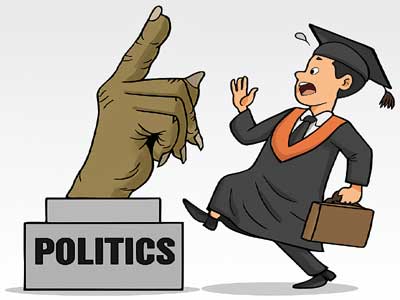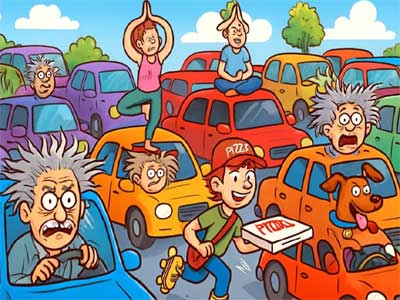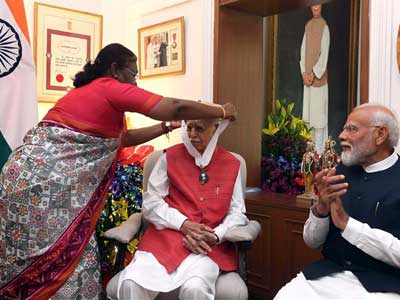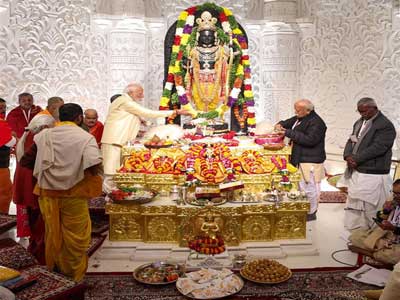How many of India’s 140 crore people can afford big cars or fancy motorbikes? Even if they buy them on EMIs, who gets free petrol? The reality is that the majority of the population—whether in cities or villages—still walks or relies on bicycles. Yet, no one ever speaks up for the interests of this vast group.
Akhilesh Yadav’s politics may be what it is, but he took a bold risk by building a ₹140 crore bicycle track from Etawah to Agra. Subsequent governments erased this bold initiative from the map.
Read in Hindi: रफ्तार के पुजारी पैदल चलने वालों की नहीं सुनते!
Nitin Gadkari seems to measure development only in terms of expressways, toll plazas, and flyovers. Pedestrians are treated like insects—victims of hit-and-runs—and he couldn’t care less.
In most cities, there are no footpaths or safe routes left for pedestrians and cyclists—every corner has been surrendered to motor vehicles. While billions are spent on flyovers, expressways, and wider roads, the common man—who walks or cycles—gambles with his life at every turn.
Hit-and-run cases are spiralling out of control, and the administration remains silent. It’s as if, in this ‘age of speed’, human lives have lost all value. Sometimes children are crushed on their way to school, other times elders are run over by reckless vehicles on their way to hospitals, says social activist Padmini Ayyar. "Are our cities being built only for vehicles? Will pedestrians just become accident statistics?"
Prof Paras Nath Chaudhary explains, "In India, with a population of nearly 1.4 billion, non-motorised transport dominates in rural and semi-urban areas. Studies estimate that 50-80 per cent of trips in rural India are on foot, especially in low-income regions where vehicle ownership is scarce. Bicycles account for 10-15 per cent of trips, with 40-50 per cent of rural households owning one. In contrast, car ownership is minimal—only 5-10 per cent of rural households own a car, while motorised two-wheelers, though growing, are accessible to just 20-30 per cent of rural and semi-urban populations. Urban areas show a slightly different trend, but even there, 30-35 per cent of trips in many cities are made on foot or by bicycle. These figures highlight that walking and cycling remain the backbone of mobility for Indians, especially outside urban centres."
Yet, infrastructure development tells a different story. India has heavily invested in motorised transport, constructing or upgrading over 65,000 km of national highways and expressways in the last decade. The Ministry of Road Transport and Highways allocated ₹2.78 lakh crore in 2024-25 for road infrastructure, with a major share going to expressways and urban flyovers.
A 2024 report by IIT Delhi’s Transport Research and Injury Prevention Centre reveals that only 10-15 per cent of urban roads have functional footpaths, and dedicated bicycle lanes are virtually non-existent outside a few pilot projects in cities like Delhi and Pune.
This neglect has dire consequences. Pedestrians and cyclists are among India’s most vulnerable road users, accounting for a significant share of road fatalities. Between 2019 and 2023, nearly 1.5 lakh pedestrians died in road accidents—20 per cent of total road deaths—while cyclists face equally high risks. Hit-and-run cases are rising, causing over 30 per cent of pedestrian deaths in 2022 alone. In rural areas, the lack of safe infrastructure exacerbates dangers, as narrow roads and speeding traffic leave no space for non-motorised users. Nighttime accidents and rural road crashes are especially deadly, with poor lighting and flawed road design being major factors.
Advocate Raj Veer notes that the Supreme Court and High Courts have repeatedly intervened to address this crisis. In May 2025, the Supreme Court declared safe pedestrian movement a fundamental right, ordering states to ensure steady footpaths. This followed a PIL citing 32,825 pedestrian deaths in 2022. The court criticised the lack of unobstructed footpaths, forcing pedestrians onto roads and increasing accident risks. The Delhi High Court has also ruled in favour of safe infrastructure for pedestrians and cyclists, but implementation remains slow. The budget for pedestrian and cycling infrastructure is less than five per cent of total transport spending.
To fix this, India must allocate resources to build safe, comfortable footpaths and bicycle lanes in rural and semi-urban areas.


















Related Items
India stuck in traffic; Cities halt, Horns holler, and time takes a nap
India’s deep dark fraud economy unveiled…
Bangladesh’s Radicals vs India’s Liberals, A dangerous imbalance…